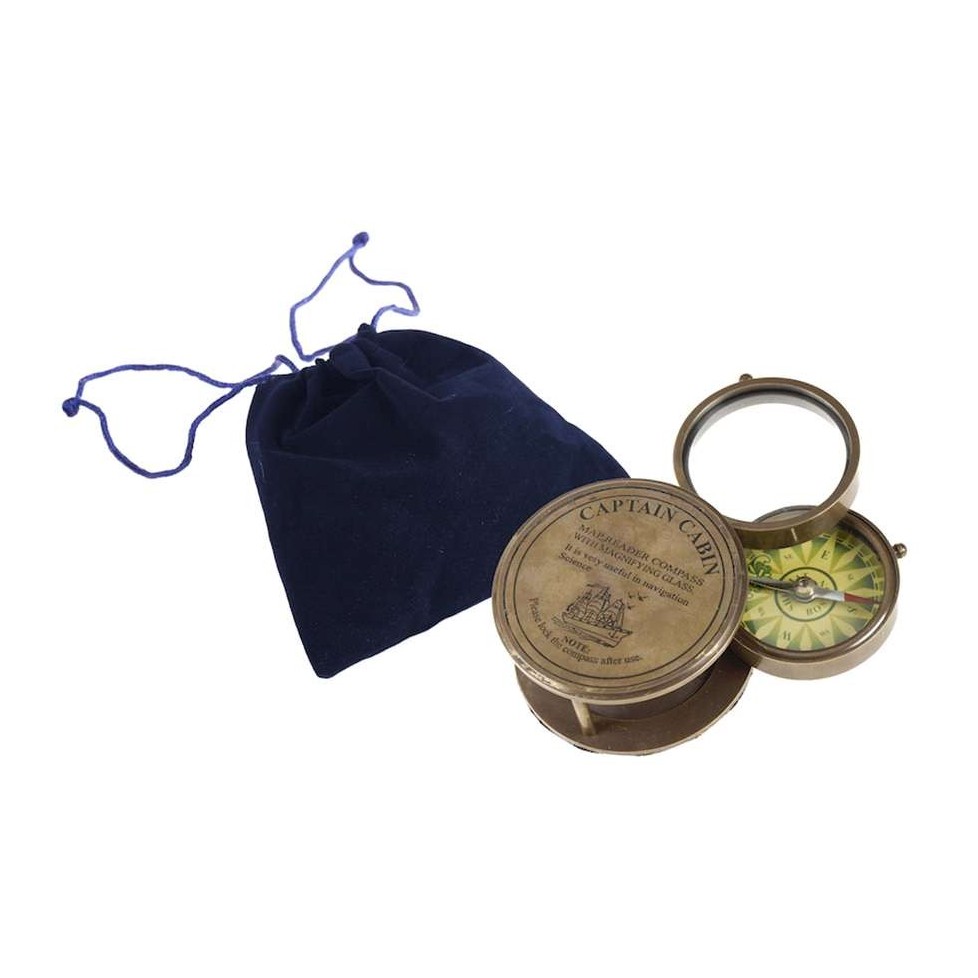

| Los pedidos realizados el día 25 de Julio, se procesarán el día 26 por fiesta local. |


Old brass compass with glass magnifier and rotating lid to protect the glass. Comes in an attractive blue velvet bag.
The compass (from the Latin "passus" ("step")) opened up the world to exploration and discovery. The principle of the magnetic needle was already known to the Chinese in the 3rd century BC and was first used by feng shui priests to tell them where and how to build. It was adapted to maritime navigation by Chinese sailors around the year 1000. The first compasses comprised a magnetic needle floating in a bowl of water, with the needle suspended on a thread or threaded through a reed. The Arabs perfected this by mounting the needle on a pivot. The compass arrived in Europe between the 10th and 11th centuries, enabling sailers to cross the oceans and explorers to discover the continents. The first instrument to resemble the modern compass is attributed to Portuguese citizen Ferrande (1483). Old brass compass with glass magnifier and rotating lid to protect the glass. Comes in an attractive blue velvet bag.
Sextant in old brass with a leather case and screen-printed glass lid.
This elegant IMEX Marine barometer analyses pressure variations allowing it to predict the weather.
Decorative compass made of brass and sheesham wood.
Roman numeral spherical clock with stem winder, decorated with compass rose on the reverse.Brass with glass magnifier. Comes with lovely acacia wood box with brass inlays.
Decorative brass sandglass with an acacia wood box. It runs for about 1 minute. Sizes: 5x9.5x5cm. Box: 12x6.5x6.7cm.
Nautical keychain pocket compass. Made of nickel, tied by a carabiner with a navy blue rope and mounted with a hoop.